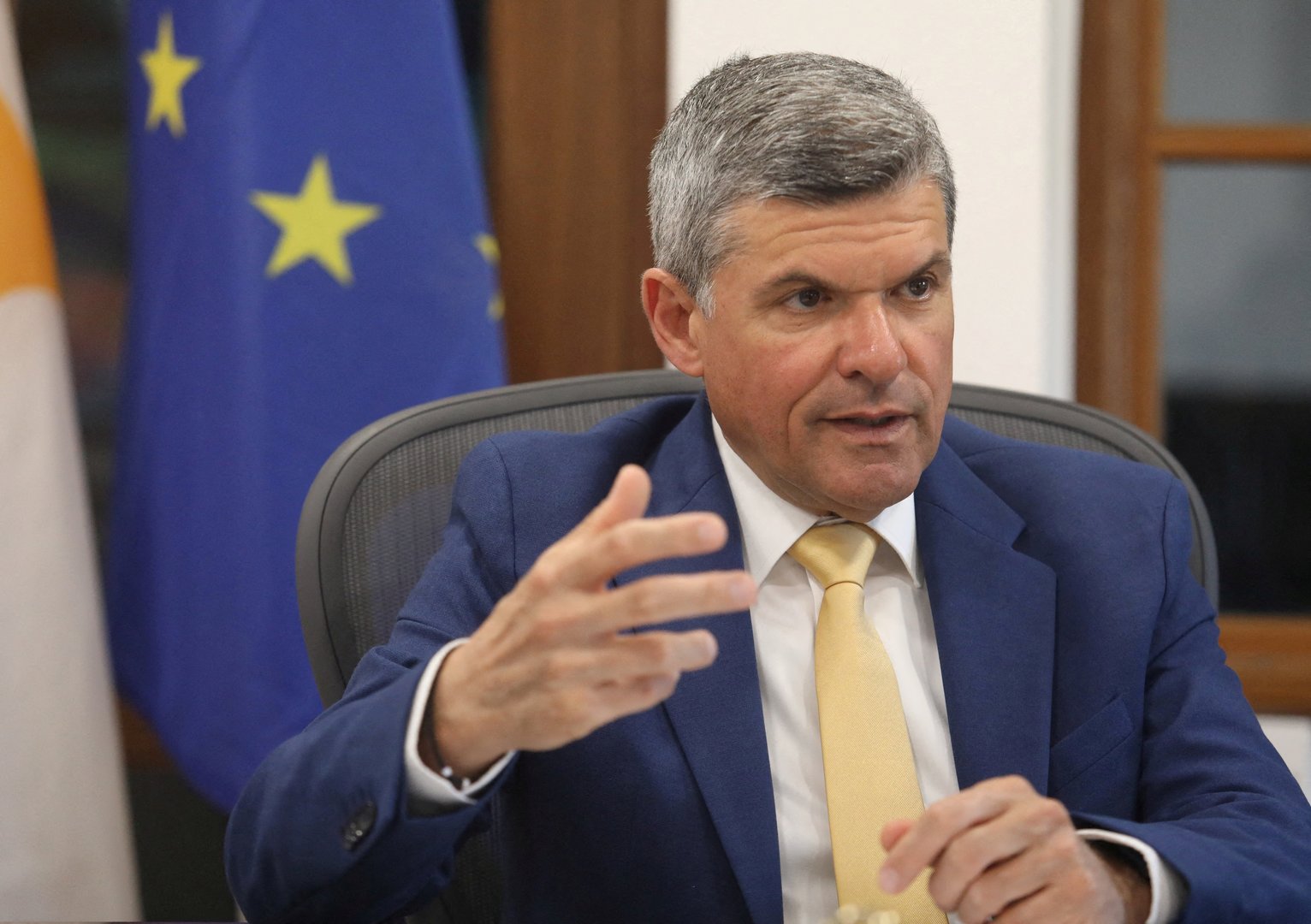Interconnector could cut electricity bills by 30% by 2030

Energy Minister George Papanastasiou on Thursday took formal delivery of a cost-benefit analysis for the Great Sea Interconnector project – the mooted subsea electric cable linking Cyprus to Greece.
The dossier was handed over by Greece’s independent power transmission operator or Admie, the project promoter, during a meeting with Papanastasiou in Nicosia.
The cost-benefit analysis study was prepared for Admie by Athens-based climate change consultants Exergia in collaboration with the National Technical University of Athens.
It claims that with a fully operational Great Sea Interconnector, electricity bills for Cypriot consumers would fall by as much as 30 per cent by 2030.
Speaking to the media after seeing the Admie team, Papanastasiou said the Greeks confirmed that under their scenario, Cypriot consumers would be charged with a levy as of January 2024. The proposed charge is 0.6 cents per kilowatt-hour.
Admie, co-owners of the project, want to charge consumers both in Greece and Cyprus from now, before the interconnector goes live. The levy would allow Admie to recover part of the €1.9 billion construction cost, and Admie chairman Manousos Manousakis had promised that Cypriot consumers would “recoup the cost” of the charge within the first year of the interconnector’s implementation.
But Cyprus’ own energy regulator threw a spanner in the works, having issued a decision that consumers here should pay nothing before the cable goes operational.
That in turn had led Papanastasiou to warn that, absent some guaranteed funding, the European Commission might withdraw its pledged €657 million grant for the project.
Papanastasiou had said that should the EU grant be withdrawn, “the project is effectively dead”.
On Thursday, the minister said it should take about two months for the government’s consultants to provide an assessment of Admie’s cost-benefit analysis. The government will weigh the pros and cons in helping it decide whether the Cypriot state should become an equity investor in the project, to the tune of €100 million.
“The schedules are tight, as there are matters which the project promoter is under pressure to start disbursing payments,” stated Papanastasiou.
Admie needs to start making payments to the manufacturer of the subsea cable. But this, said Papanastasiou, did not mean the Cypriot side would resort to hasty decisions, given the sheer scale and lifetime of the proposed project.
A crucial meeting is set to take place on Monday between Admie and the recalcitrant energy regulator. There, the Greek side will try to change the regulator’s mind regarding when Cypriot consumers should start paying a charge.
Asked whether the regulator can be persuaded to reverse its prior decision, Papanastasiou suggested it is possible.
Regarding the 0.6 cents levy for the interconnector, the minister said this would be added to the 33 cents per kilowatt-hour – the current retail rate of electricity in Cyprus.
“So the 33 cents per kilowatt-hour would become 33.6 cents.”
As for the risk of the European Commission pulling the plug on the pledged €657 million, the minister said this was “not an official position”. Rather, during a recent video conference call with Commission officials, the latter suggested that the involved parties take final decisions by mid-August.
“But that is not an ultimatum, rather, an expectation,” asserted Papanastasiou. The European Commission could grant an extension.
Responding to another question, the minister said the proposed interconnector would have a positive impact on the electricity market – which Cyprus hopes to liberalise by summer next year.
“Without the interconnector, we anticipate that due to surplus generation of power from renewables, along with the power generated from conventional fuels, Cyprus would have too much power available, too many megawatts that could not be consumed inside the country.
“Even with storage capacity…in coming years we would find ourselves in the position of too little [energy] consumption and too much production, meaning we’d have to discard the green energy from renewables. And that’s why electrical interconnectors are useful.”
